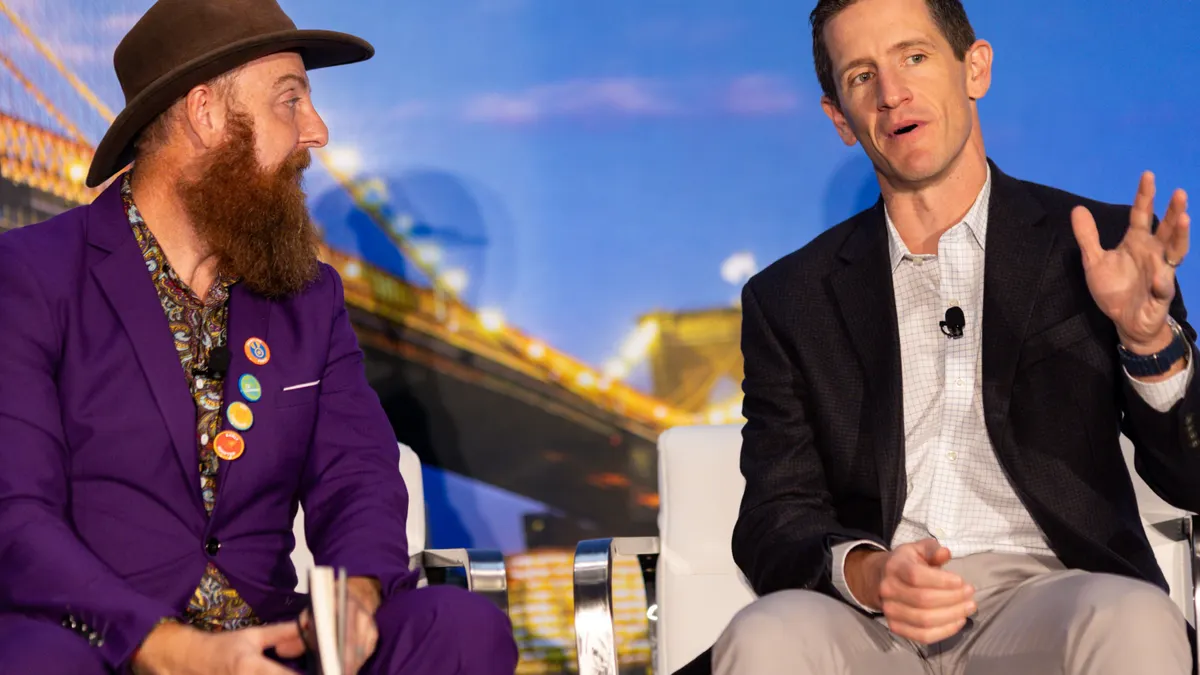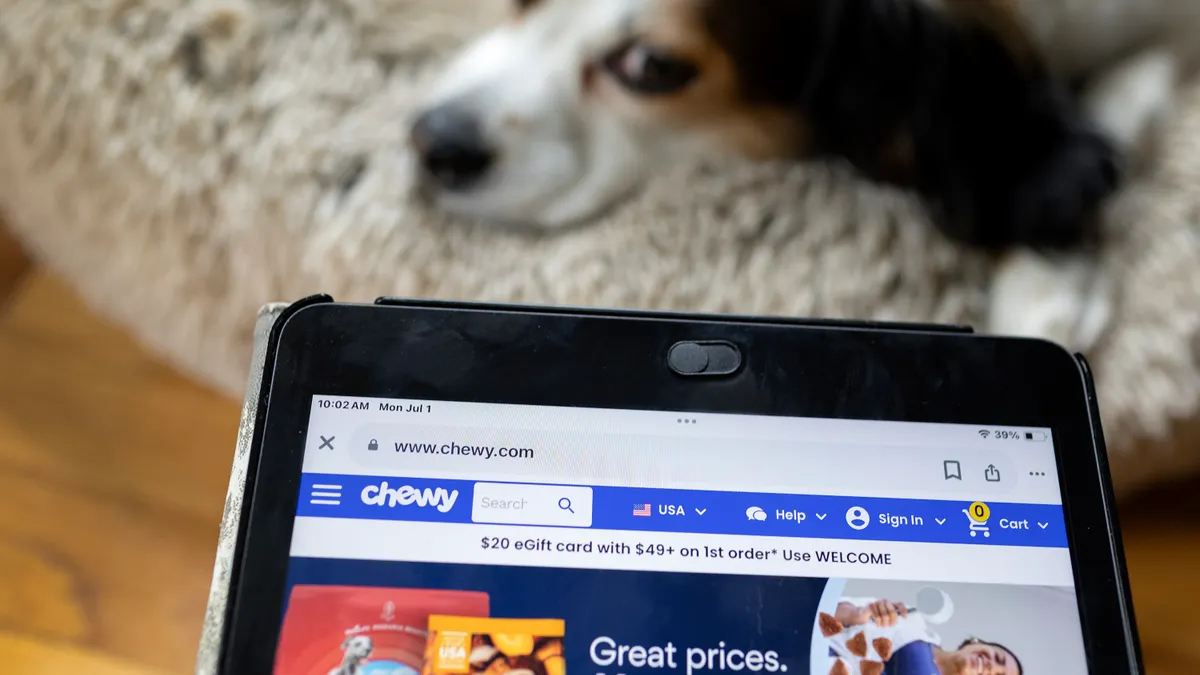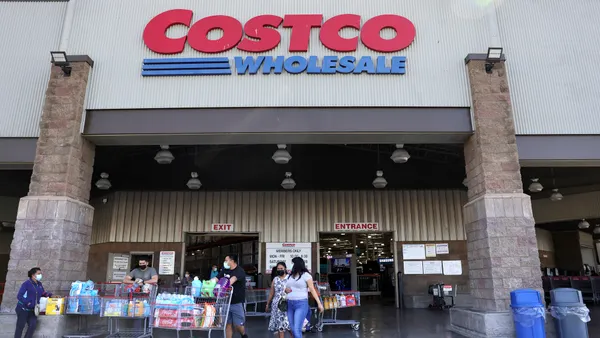Church’s Texas Chicken, a fast-food restaurant chain with over 1,500 locations specializing in fried chicken, did not have a loyalty program when Jessica Wu-McConnell, vice president of digital and loyalty, joined the company in June 2023. However, the brand believed a loyalty program would help it build on its core business.
“Church’s is already a brand for value seekers,” Wu-McConnell said. “We had very compelling pricing, but we did not have a true rewards program.”
The fast-food giant is one of a growing number of restaurants, grocery stores, mass retailers and travel companies that have launched or revamped their loyalty programs in recent years to increase engagement among existing customers and attract new ones.
Loyalty programs have grown in popularity since the COVID-19 pandemic, with more consumers shopping online and seeking greater value amid high prices. Among U.S. consumers who participate in loyalty programs, the average consumer belongs to 14 free and paid programs, according to a study by the Boston Consulting Group.
Personalized shopping experiences have the greatest potential return on investment, according to McKinsey & Co. These experiences often include customized promotions, member benefits, marketing and personalized customer journeys.
Companies can also learn more about their customers’ behaviors and needs through a loyalty program — and in turn, further customize them.
“In sectors with high-frequency customer interactions, such as the restaurant, credit card, and beauty industries, the accumulated customer data alone can often justify investment in a loyalty program,” the BCG study found. “These programs don’t just help businesses collect and store valuable data; they offer an avenue to monetize it through highly personalized engagement with members.”
Church’s, for instance, had limited visibility into its customer's behavior before launching its Real Rewards program in August. The company plans to update its Real Rewards program as it gathers more customer data and insight from people throughout the company.
“We’re going to start learning so much about our customers just by having this program in place,” Wu-McConnell said.
Value is king
Before launching or changing a loyalty program, business leaders should conduct market research to better understand what their customers and prospective customers value, experts say.
Companies with an existing loyalty program should also “conduct a thorough return on investment analysis of the loyalty program to determine the value it is — or isn’t — generating,” Philip Shelper, CEO and founder of Loyalty & Reward Co, said in an email.
“This should focus on incremental benefits across customer acquisition, spend stimulation, retention, advocacy and data collection,” Shelper said.
Loyalty programs are most likely to succeed when customers feel like they benefit from participating in the program, with members’ spending increasing alongside their satisfaction, the BCG study found.
“Customers join loyalty programs because of the promise of value, and they continue to engage because they perceive they are accessing value,” Shelper said.
Market research conducted by Church’s, for example, found that while its customers were interested in free or discounted sides and drinks, those offers were not the most compelling to consumers.
“They wanted free chicken,” Wu-McConnell said.
Church’s customers also wanted simplicity, flexibility, choice and to earn rewards quickly — common desires among consumers, regardless of industry, experts said.
“We learned that a lot of our guests are families,” Wu-McConnell said. “So, it was important for us to have family-sized offerings in the program so they could feed their family for free in exchange for points.”
Other companies, such as Best Buy, Dunkin’ and Starbucks, have sparked a backlash among their customers by reducing the value of their existing rewards programs, which “should be the last step that you take,” said Phil Hussey, principal consultant at LoyaltyLevers.
“Loyalty program managers should be constantly obsessed with sourcing more value for their members,” Shelper said.
Church’s took the data it had and built its loyalty program’s value add around its customers’ behavior.
Because about 50% of its customers are cash buyers, Church’s allows members to claim rewards whenever they purchase in-store, online or through the company’s new mobile app, whether they pay electronically or with cash.
“With loyalty programs, brands are going all digital, and you have to order online or in the app,” Wu-McConnell said. ‘We wanted a loyalty program that anyone could participate in.”
To announce the program, Church’s launched an integrated marketing campaign, including a promotion to give away free chicken to 500 members for a year. Normally, it would reserve such campaigns for new menu items or limited-time offers, but the company wanted to “get people excited” and educated about the new loyalty program, Wu-McConnell said.
“You can’t just launch it and let that be that,” Wu-McConnell said. “You need to make sure you talk about it.”
Change management key to loyalty program success
Change management was an essential part of rolling out Church’s new loyalty program.
It was crucial to “mobilize” leadership, franchisees, frontline team members and others to ensure the Real Rewards program would be successful because that “ultimately impacts the customer experience,” Wu-McConnell said. The company’s Real Rewards program is part of a broader effort, including redesigned stores, to overhaul customers’ experience at Church’s.
Companies seeking to change their existing loyalty program “should be honest and transparent” about changes, Shelper said.
Putting a positive spin on changes that are detrimental to members or simply making changes “without saying anything in the hope no one will notice” is a recipe for disaster, Shelper said. “The biggest pitfall is underestimating the intelligence of the member base.”
Companies can deaden the blow of value-cutting changes by delivering a mix of good and bad news when they announce them, Shelper and Hussey said.
One way for companies to avoid unnecessary backlash is to change how they structure their loyalty programs. For instance, personalized rewards that reduce value for certain customer segments and focus or improve value for others can allow businesses to lower the total cost of their loyalty program without alienating their best customers, Hussey said.
Personalized offerings, which vary by member, also make it easier to change a loyalty program because published rewards schedules give “you no flexibility” since “you publish every detail of what everybody earns,” Hussey said. Convenience store chain 7-11 successfully moved toward a personalized rewards model in recent years, without disrupting its core consumers, Hussey said.
“You would never know that 7-11 has tweaked the overall value of the program,” Hussey said.
It’s also important that companies have an exit strategy in case a new loyalty program or changes to an existing one don’t pan out, Hussey said.
Launching a new loyalty program as a promotion, for example, can be “a much better route” than “launching a monolithic program that you’re stuck with,” Hussey said. It also allows businesses to test and refine changes to their loyalty programs rather than trying to get everything right from the start “because you still won’t know everything,” even with careful planning.
“Always leave yourself room so that it never feels permanent,” Hussey said, noting that loyalty programs need to adapt as a company’s needs change.


















